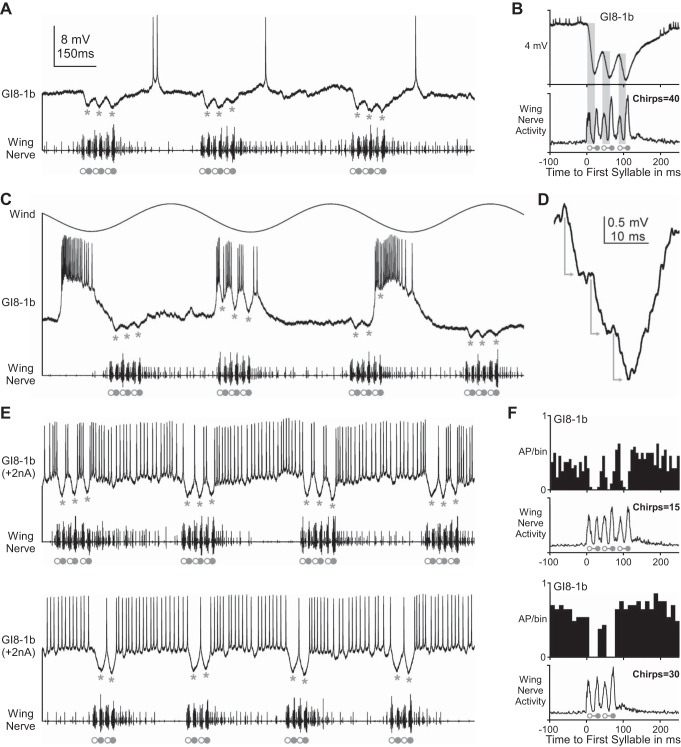Fig. 4.
CDI of the cercal giant interneuron GI8-1b during fictive singing. Open and solid circles indicate the opener and closer motoneuron spike burst, respectively, in the wing nerve (bottom traces). Spontaneous (A), wind-evoked (C), and current injection driven (E and F) spike activity of GI8-1b is rhythmically reduced by inhibitory postsynaptic potentials (IPSPs; marked by asterisks) during fictive singing. B: GI8-1b receives inhibitory inputs (highlighted by gray bars) during the opener phase of each syllable; the inhibition reaches its maximum at the beginning of the subsequent closer phase (signal average of 40 chirps). D: for each syllable of the chirp, a large compound IPSP results from summation of 3–4 individual IPSPs (indicated by gray arrows). E: tonic spike activity of GI8-1b, induced by 2-nA depolarizing current injection, was interrupted by CDI in phase with the syllable pattern of the singing motor activity. F: spike timing histograms for 3- and 2-syllable chirps (15 chips: n = 394 spikes and 30 chirps: n = 634 spikes, respectively) show the reduced spike activity of GI8-1b occurring in phase with the fictive syllable pattern.

